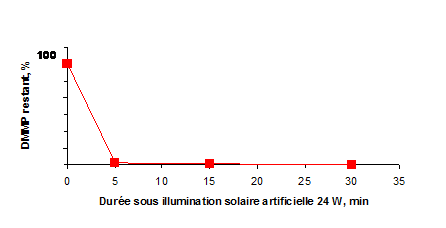Photocatalytic textile or textile fibres with chemical or biological agent degradation properties
Référence
01607-01
Mots-clés
Statut des brevets
French patent application FR08 01232 filed on March 6, 2008 entitled “Fibres textiles ayant des propriétés photocatalytiques de dégradation d’agents chimiques ou biologiques, procédé de préparation et utilisation à la photocatalyse”





Inventeurs
Valérie KELLER-SPITZER
Nicolas KELLER
Mathieu GRANDCOLAS
Alain LOUVET
Statut commercial
Non-exclusive licence, Collaborative agreement
Laboratoire
Laboratoire des Matériaux, Surfaces et Procédés pour la Catalyse, a CNRS laboratory (UMR 7515) in Strasbourg, France.
Description
TECHNICAL DESCRIPTION
This invention deals with new one-dimensional nanocomposites coated on textiles fibres to develop highly efficient chemical and biological agents degradation. In one particular embodiment, the nanocomposites are titania based nanotubes and are deposed on the textile fibres using the Layer-by-Layer deposition method allowing a strong anchorage as a thin layer film of controlled thickness on the textiles fibres. These new photocatalytic textiles resulted in a high activity toward gaseous and liquid chemicals and biological agent elimination, exhibiting in particular much higher activity than textiles modified with conventional and commercial TiO2 particles.
For example, as shown in the figure below, the kinetic of elimination of a specific chemical agent (dimethylmethylphosphonate (Sarin and VX simulants )) can be significantly improved.
These photocatalytic performances are non sensitive to relative humidity and the degradation process is efficient between -10°C and 100°C.

INDUSTRIAL APPLICATIONS
Originally designed for military and NRBC applications, these textiles are reducing risk of secondary contaminations by in-situ degradation of chemical or biological agents impregnated in the contaminated tissues. Due to their optimal degradation properties , they induce a sensitive diminution of the cost of treatment of contaminated textiles.
Thanks to the resistance of the selected nanostructure, these textiles could be washed several times without losing their photocatalytic properties. Efficient against different organic molecules, these textiles could find also applications as technical textiles for the medical or furnishing field.
For further information, please contact us (Ref 01607-01)